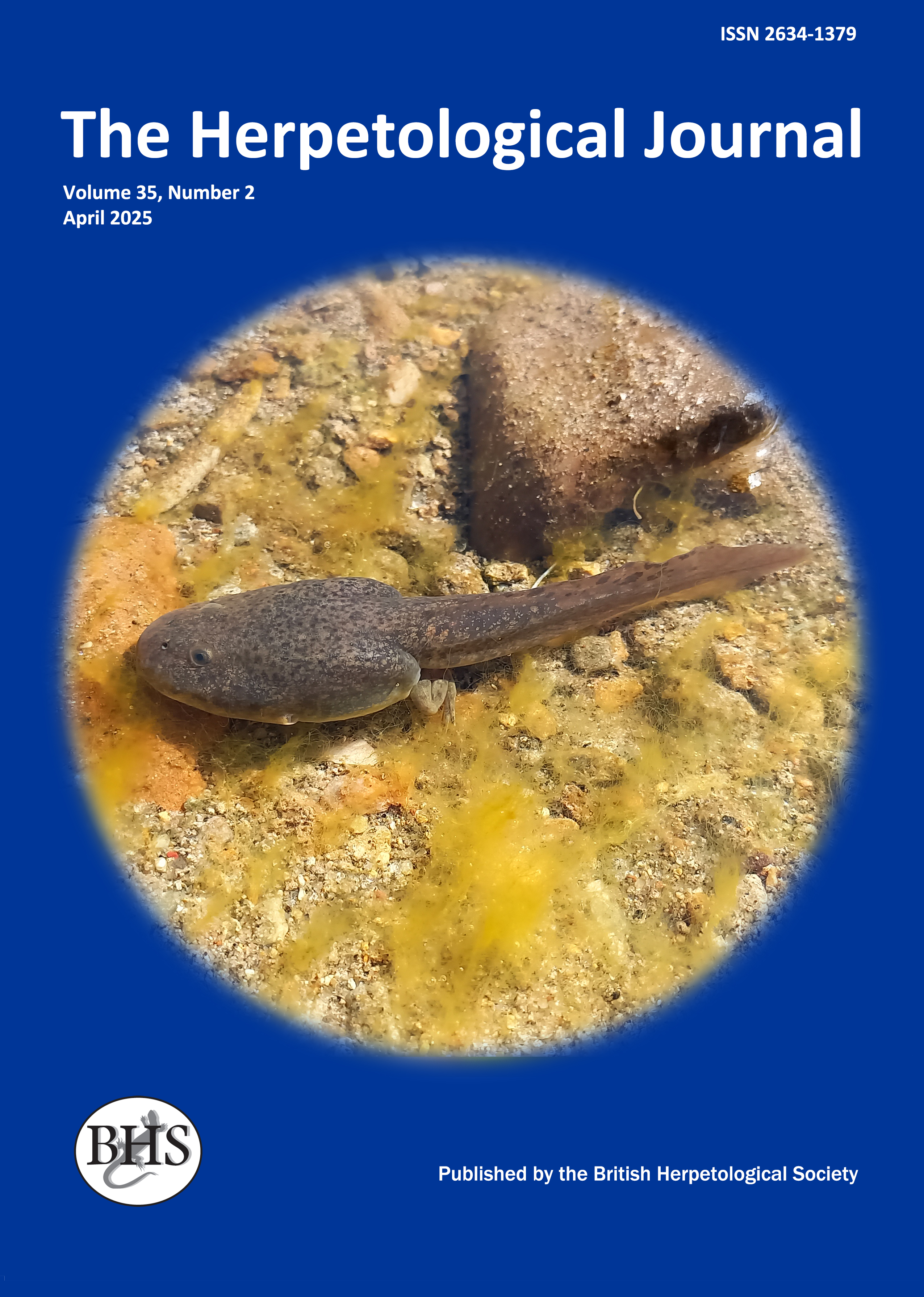
The Herpetological Journal
The Herpetological Journal is the Society's prestigious quarterly scientific journal. Articles are listed in Biological Abstracts, Current Awareness in Biological Sciences,Current Contents, Science Citation Index, and Zoological Record.
ISSN 0268-0130
2021 Impact Factor from Clarivate for the Herpetological Journal is 1.194, an increase of 0.332 from 2020.
pdf 01. Intraspecific variation in the avoidance response of stream frog (Mannophryne trinitatis ) tadpoles to fish and prawn predators
1548 downloads
Open Access
pp. 337-346
Authors: Jowers, M. J.; Campell-Palmer, R.; Walsh, P. T. & Downie, J. R.
Abstract: The stream frog, Mannophryne trinitatis, lives in and beside steep mountain streams of Trinidad's Northern and Central ranges. Male frogs have strong anti-predator behaviour and prefer to deposit tadpoles in pools that lack predators (particularly the fish Rivulus hartii and the freshwater prawn Macrobrachium carcinus). The two predators are rarely found in the same streams and different M. trinitatis populations may show specific anti-predator behaviour to the predators they encounter in the wild. To assess tadpole spatial avoidance of predators, we presented small and larger tadpoles from four M. trinitatis populations to each predator. Three tadpole sources were from the Northern Range: Mount Saint Benedict, Lopinot (where R. hartii is abundant), and the Maracas Bay area (where M. carcinus is present); the fourth was from Tamana cave, Central Range, where neither predator occurs. To determine predator detection mechanisms employed by the tadpoles, we presented the predators in three container types: a mesh cage (for chemical and visual detection), an opaque container with holes (chemical but no visual detection), and a transparent container (visual but no chemical detection). Different sized tadpoles (large and small) showed the same response to predators, and tadpoles principally used chemical cues to detect predators. All populations showed a stronger response to the presence of R. hartii than to M. carcinus. We attribute this latter difference to the restricted distribution of M. carcinus and to the few sympatric zones between the tadpoles and these predators. Thus tadpoles lacked a specific anti-predator response to M. carcinus. Naïve tadpoles from Mount Saint Benedict and Tamana that had never previously encountered either of the predators showed strong anti-predator responses, suggesting that the anti-predator response is likely to be inherited.
Keywords: TRINIDAD, MACROBRACHIUM, RIVULUS, ANTI-PREDATOR BEHAVIOUR

